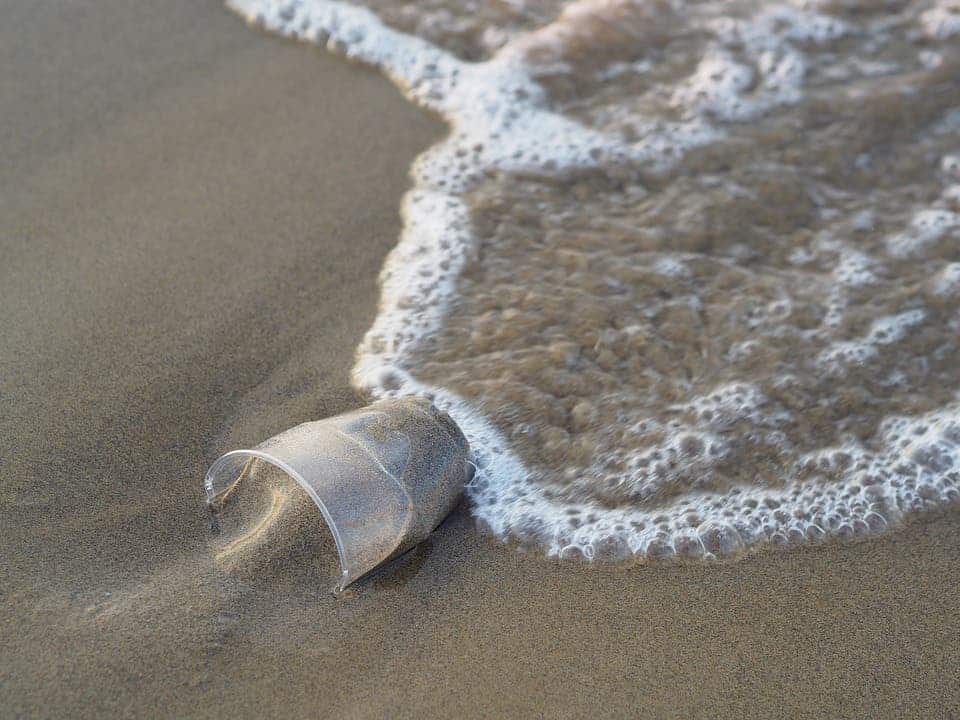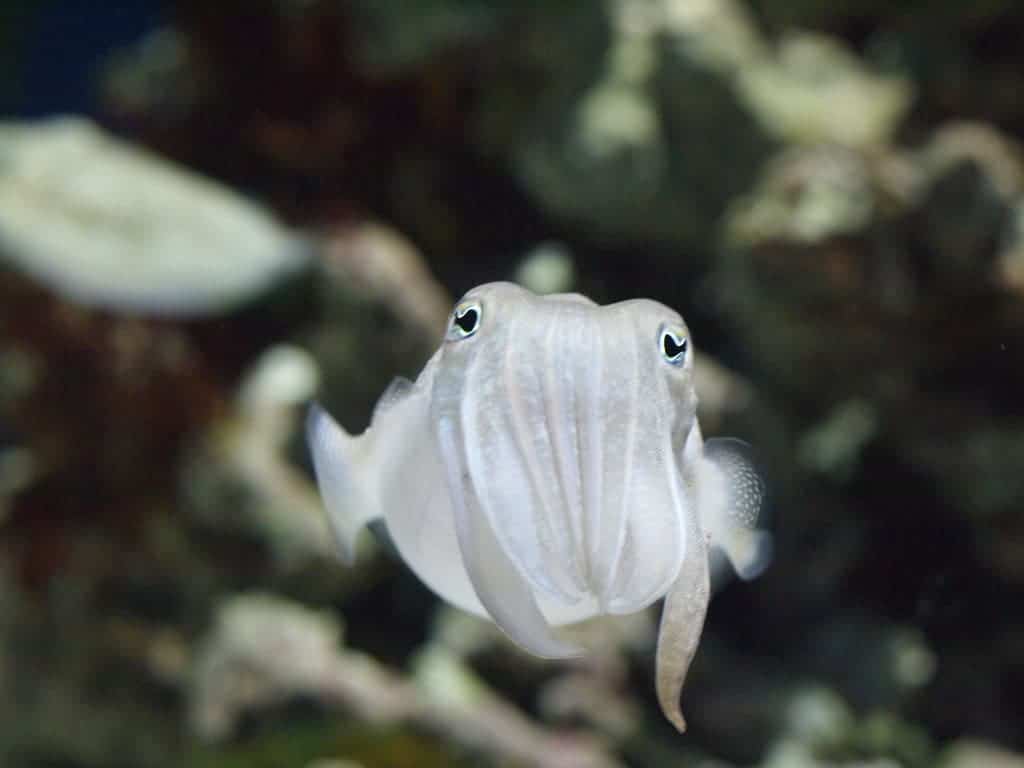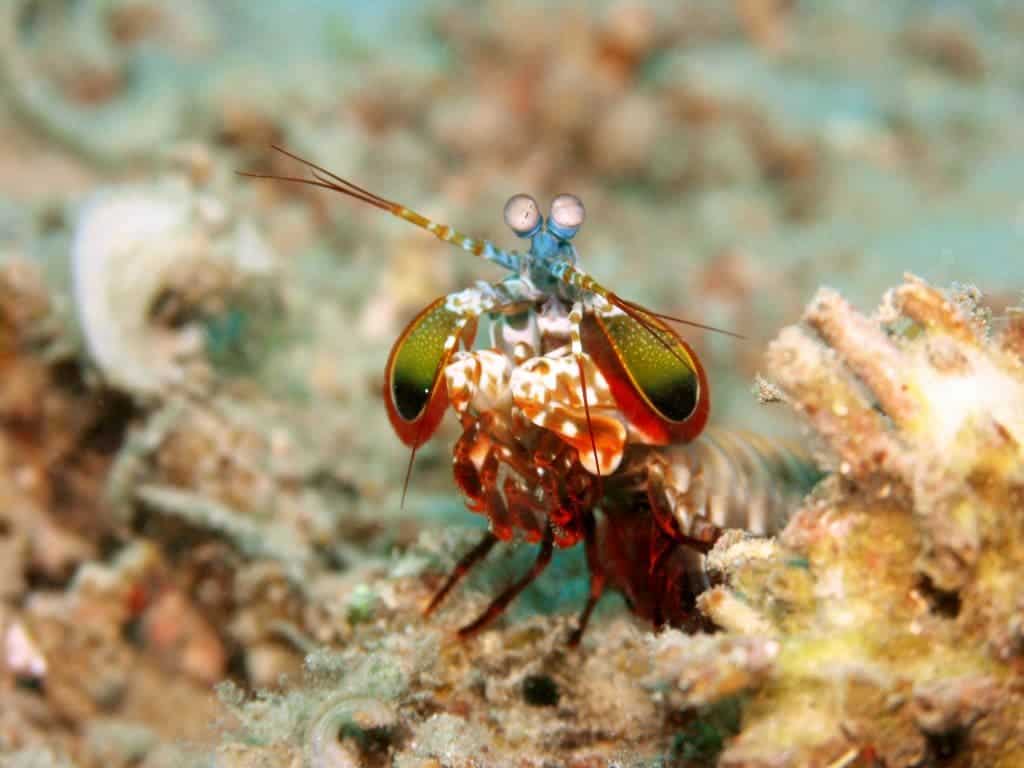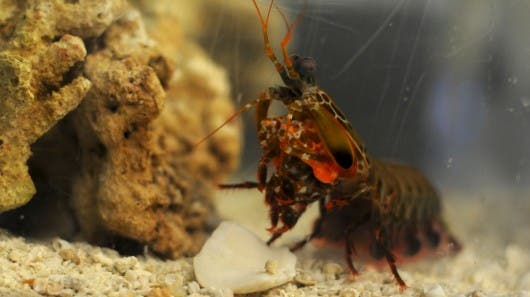
As the night covers the tropics, odd clicky sounds run about much to the annoyance of sailors stationed in harbors. These sounds are made by the punching mantis shrimp, a very small crustacean which doesn’t seem that much threatening but who definitely lives up to its name. Its claws are so powerful that it can clamp with a force up to 1,000 times its own weight, shattering unsuspecting prey, other punching mantises and just about anyone or anything that gets in its way. This is a bad shrimp, no doubt, yet the things scientists can learn from it are nothing short of amazing. A team found, for instance, that they could design an ultra strong composite material based on how the punching mantis shrimp’s claw are made, with potential applications in aerospace, auto industry or defense.
You don’t want this shrimp on your dinner table
At 4 to 6 in (10 to 15 cm) long, you might not give a second thought to the punching mantis shrimp, but it really is a sucker puncher. First thing you notice is its club-like claws, but what’s amazing is how hard it can close them. Close observations show that its claws cock back like a pistol hammer and as it snaps closed, it accelerates faster than a .22-caliber bullet, generating a force more than 1,000 times the shrimp’s own weight. So if it pinched your finger, imagine something like 200 lb (91 kg) instantly pressing over it. If you’re a punching mantis shrimp enthusiast, then you know how hard these fellas are hard to keep since they regularly break aquariums and owners need to keep them in special tanks.
At this kind of acceleration, the energy released by the shrimp’s claws is enormous – enough to literally boil water at a temperature of 4,000⁰ C (7,200 ⁰ F). Also, the released energy triggers a shock wave that it stuns or kills small prey at a distance. By now, I take it, you’re convinced the punching mantis shrimp is one bad mother. A natural question arises, however: how can this tiny animal withstand these enormous energies in its claws?
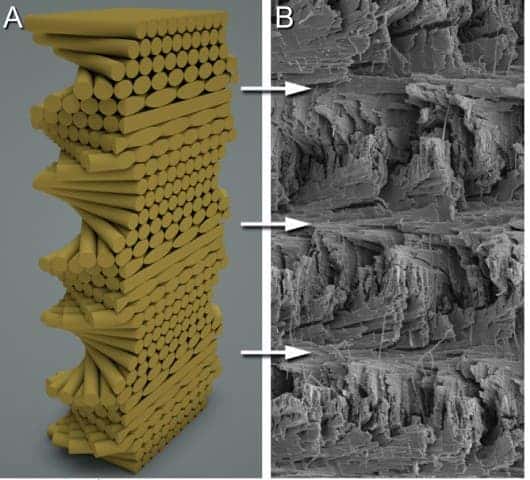
The same question puzzled a team of researchers at University of California who saw this an opportunity to maybe devise a new material based on how the shrimp’s claws are grown. Carefully studying it, researchers found the claw’s covering, called the cuticle, is made up of several layers, the innermost of which is the endocuticle. Remarkably, these sections are comprised of tiny mineralized fibers aligned in a spiral fashion, as each layer is offset by a small angle from the next.
Using carbon fiber-epoxy composites, the researchers designed a spiral of their own with fibers set at three different angles ranging from 10 to 25 degrees to the previous layer. They then built two control structures made from the same material: one in a simple one-way spiral and the other with each layer placed at a quarter turn to the previous one.
Shock, tension and compression tests showed that control materials behaved badly, with the one way spiral failing completing and the other becoming severely punctured or damaged. The material designed based on the punching mantis shrimp, however, only took up 20% of the damage as that of the quarter turn version. The shrimp’s spiral design allows for a more even dispersion of energy, keeping shock from concentration in a single spot, thus avoiding structural failure.
The findings, published in the journal Acta Biomaterialia, suggest that a multitude of everyday applications could be improved with materials designed like the shrimp’s claws, from aerospace, to automobiles, to body armor. It remains to be seen how easy manufacturing can be integrated to make such compounds cheap enough for mass production. Yet again, however, studies such as this show that scientists need not look too far inspiration to solve the challenges they’re met with. Imitation can be an art.

